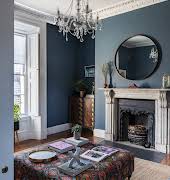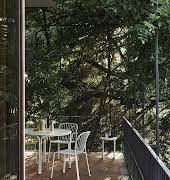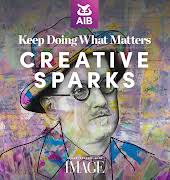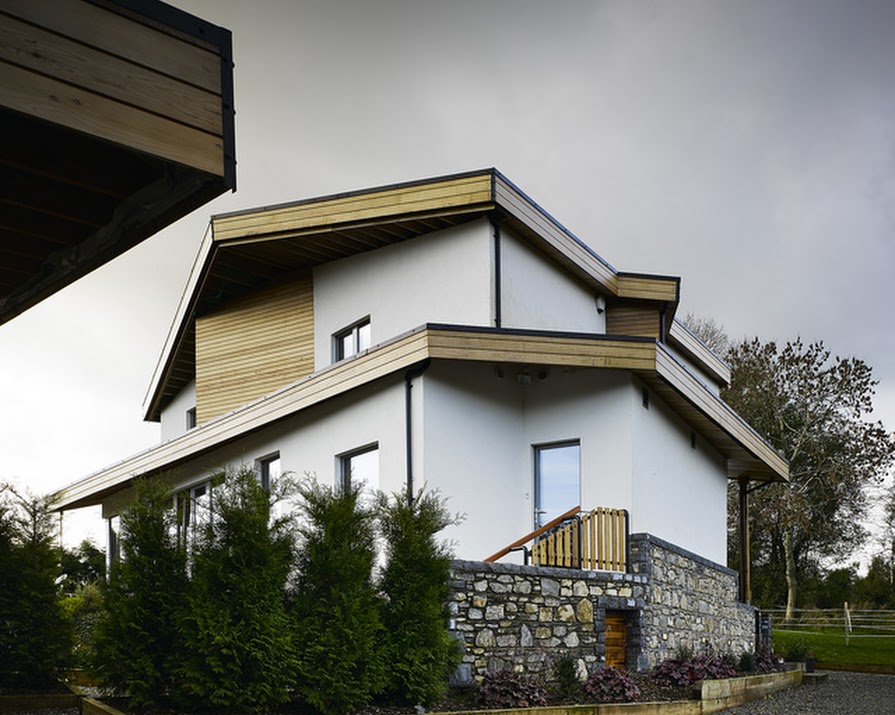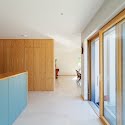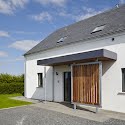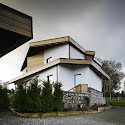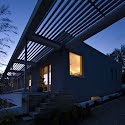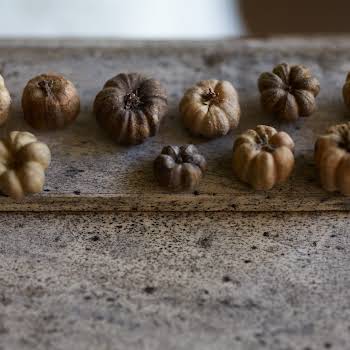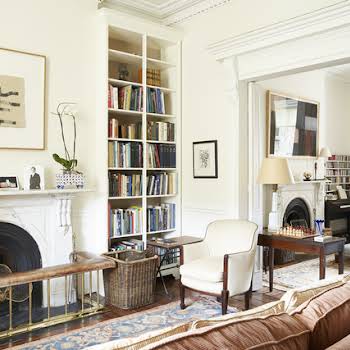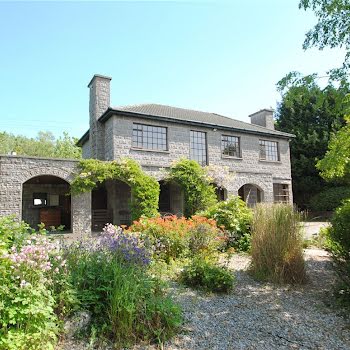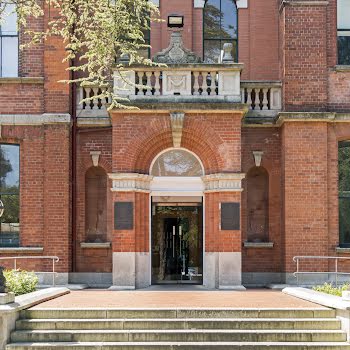
How About This For a New Year Resolution: Build an Eco-Friendly Home in 2016
By Kate Phelan
08th Jan 2016
08th Jan 2016
3 Miles Sampson. For this house in the Golden Vale of north Cork, sustainable architect Miles drew inspiration from the rolling patchwork landscape that surrounds it. ?The roof of the house appears as a series of smaller patches within the surrounding landscape, like a patchwork quilt spread over the house to keep it warm,? he says.
This?new year, we’re thinking about forward-looking home updates, and we’re not alone. From this month on, all new houses within Dun Laoghaire-Rathdown in Dublin will be required to meet passive-house standards???an?eco-friendly building technique that’s easier to take on than you think ?
Far from a passing trend, our attraction to sustainable construction continues to strengthen. Although the idea of a ?passive? house may conjure images of stark minimalism rather than cosiness, owners of this style of energy-efficient home actually enjoy higher comfort levels and consistently warmer living spaces. The meticulous design strategies behind this progressive construction method all but eradicate the heat losses that have blighted so many traditional builds, with the resulting energy savings (reaching levels of up to 90 per cent) translating into suitably snug interiors.
The concept of ?passive? housing hinges on the idea of temperature self-regulation, with the goal of producing homes that require very little in the way of additional ?active? heating and cooling, as compared to conventional builds. ?Passive housing takes construction to new levels of quality, comfort and energy efficiency,? explains Marlene O?Mahony, quality manager at Munster Joinery. ?Buildings of this standard achieve a comfortable temperature in both winter and summer without conventional heating and air-conditioning systems. Windows and doors are critical on a passive house build, contributing to the ?thermal envelope? [everything about the house that serves to shield the living space from the outdoors], airtightness, energy balance and accounting for a significant slice of the budget. It is essential that window performance is up to passive standards, and the way to ensure this is to use PHI-certified windows.?

In spite of being occasionally misperceived as complicated or worse, faddish, the science behind an eco build is more preventative than subversive. Passive building standards dramatically improve energy performance through surprisingly simple methods, primarily by eliminating unnecessary waste. According to Jonathan Jennings, former research and development manager of Kingspan Century Homes, architects can fairly easily achieve low energy-demand buildings simply by deliberately incorporating a few key considerations into the early stages of a new build. These include the use of an efficient insulation fabric for the building shell (creating, again, a notional ?envelope? around the home to limit energy loss), the quality of the windows, the orientation of the building (to maximise solar gains), and mechanical heat recovery and ventilation, to both supply and reuse air.
It may sound simple, but can we really rely on solar power to get us through a wet Irish winter? Keen to know more about the day-to-day reality of living in an ultra-low-energy home, we spoke to the owner of a picturesque passive house in the Dublin mountains, designed by Fitzpatrick & May Architects, who explained: ?A combination of solar tubes, photovoltaic cells and unusually high levels of insulation and airtightness bring and keep energy into the house, but this alone isn’t enough during winter. A log stove (with air drawn from outside) warms the air directly, as well as heating a 200-litre hot-water cylinder and two 1,000-litre buffer tanks. In addition to providing a supply of?hot water, the energy in these tanks can be directed to heat the incoming air and radiators.?
The result is that passive houses don’t have to rely heavily (or at all, in some cases) on fossil fuels in the way traditional builds have, making them significantly more eco-friendly. Last year, the Intergovernmental Panel on Climate Change’s fifth assessment’report listed passive housing recommendations as ?one of the key climate change mitigation options available for buildings?.
Certified passive houses are still fairly few and far between in Ireland, but that may be about to change. Following in the footsteps of Brussels, from this month forward?all new houses within Dun Laoghaire-Rathdown will be required to meet passive-house standards, signifying once and for all the shift of green building practices in Ireland from fashionable to fundamental.




